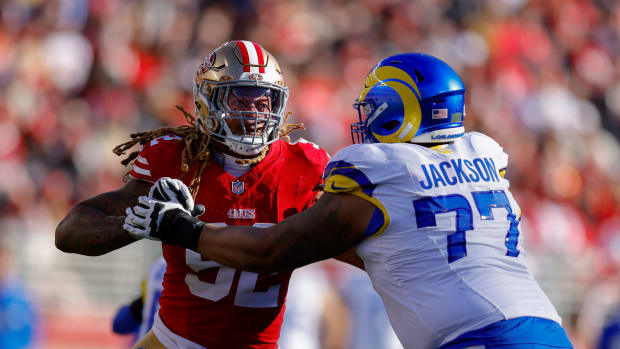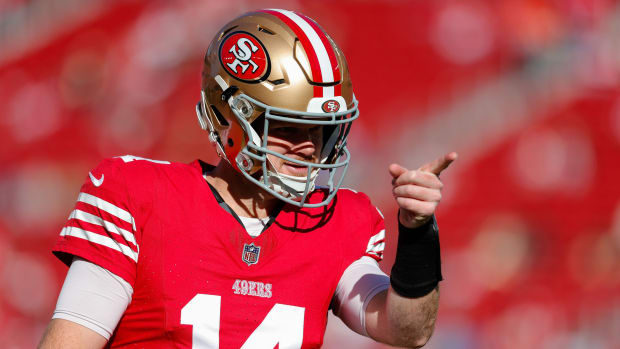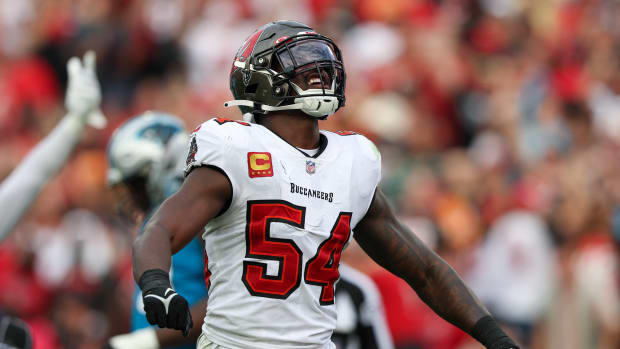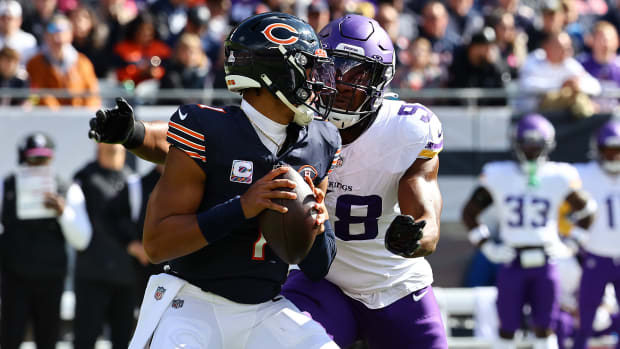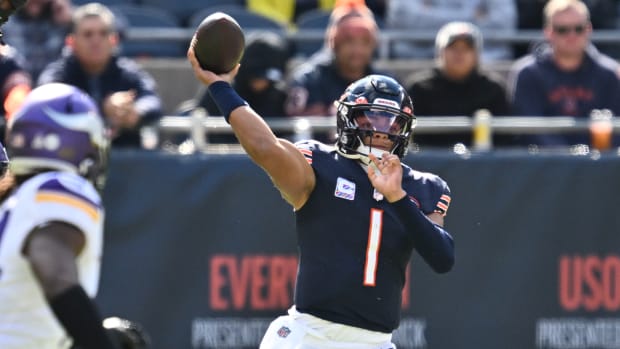‘Collaboration is the best thing a human can do’: How Seahawks' display of unity unfolded
SEATTLE – At 12:55 p.m. the Seahawks dashed through the makeshift tunnel near their locker room at CenturyLink field. They ran into both the sunlight and the 2016 season, through a tunnel of cheerleaders waving pom-poms, past six totems that blew fire into the sky. They had several plans: for the offense, defense and special teams units, like usual, and, on this Sunday, even for the national anthem.
Servicemen and servicewomen lined the opposite sideline, where the Dolphins continued to warm up. It was the 15th anniversary of September 11th, 2001, and collectively, they held an American flag that was at least 100 yards long and 50 yards wide. After the coin toss, the military members stretched that flag all the way to Seattle’s sideline, where the Seahawks stood together, players and coaches and support staff, their arms linked.
Arian Foster, Marcus Peters among NFL players protesting during national anthem
The Seahawks called their linkage a demonstration of unity rather than a protest, a collective action meant to spur dialogue and education. It was not, they said, unlike the message sent by 49ers quarterback Colin Kaepernick when he didn’t stand for the national anthem in recent games. “Yes, there are things in our country that need to be changed,” says Seahawks receiver Doug Baldwin, who told SI.com he spoke to Kaepernick “almost every day” for the last two weeks.
A video message from President Barack Obama played across the big screen, followed by the national anthem. The Seahawks remained physically connected as four Dolphins knelt with their hands over their hearts. Baldwin can’t begin to describe the emotions he felt in that moment, as he thought about his grandfather, a military man named Junius Boning, police brutality and the thousands who lost their lives fifteen years earlier on Sept. 11. “What you saw was a unified group,” Baldwin says. “Anything that happened on the field, that’s nothing to us because we’ve already displayed we’ve got each other’s backs.”
Baldwin says this in a quiet moment after the Seahawks’ 12–10 victory, after his news conference in an interview room that’s empty except for his friends and family and a handful of support staff. He wears a black sweatshirt with Beastmode splashed across the front, a nod to the nickname of Marshawn Lynch, his favorite teammate and (for now) a retired running back. Where Lynch was famously a man of few public words, Baldwin speaks often and anywhere, although as he describes how the demonstration came together he is uncharacteristically careful.
This is an important topic to Baldwin. He doesn’t want to be misconstrued.
Nearly every player, coach on Woodrow Wilson high school team kneels for anthem
He says the Seahawks held a team meeting Friday afternoon. They had already discussed the possibilities for Sunday in smaller groups, often with players at their same position. Baldwin says the meeting lasted about an hour and between 10 to 12 players spoke, including teams leaders such as Russell Wilson, Michael Bennett, Kam Chancellor, Richard Sherman and himself. Bennett mentioned social media because of the reach of players like Wilson and Sherman and others, which he (perhaps generously) estimated in the neighborhood of 60 million followers on various platforms.
The Seahawks did not vote on whether to link arms per se, not with a ballot or a show of hands. Instead, Baldwin says six players met with every other teammate individually, to answer questions and gauge the team’s collective mood. Some teammates, Baldwin says, asked questions, mostly about what would happen after the team linked arms and how they planned to follow through. “Once we explained ourselves,” Baldwin says, “everyone was on board.”
“Collaboration is the best thing a human being can do,” Bennett said. “There has to be dialogue. If people just focus on (players) taking a knee, then we can’t even get the dialogue started.”
To Bennett, Baldwin and others, their display Sunday was far less important than how they follow through on the attention that will inevitably result from it. Their coach, Pete Carroll, had invited the noted sociologist Harry Edwards to visit with his players about three weeks ago. (Carroll and Edwards also talked this past week.) The one thing Edwards said that made the biggest impression on the Seahawks was this: the difference between a mob and a movement is follow through. “If we’re going to sit here and talk and do these gestures and we don’t follow through then we’re just a mob,” Sherman says. “It’s not real. But if we get things rolling, then it’s a movement.”
NFL Week 1 Blanket: Eagles may have won, but hold off on Carson Wentz's coronation
Several Seahawks announced their plans on Saturday on social media. What they didn’t see is what Baldwin revealed afterward: that they planned to meet with Ed Murray, the Seattle mayor, and police chiefs across the state. That they had spoken to former teammate Nate Boyer, a Green Beret, so as not to disrespect the military on the anniversary of 9/11. That Carroll was on board, fully supportive of their efforts. Follow through, he reminded them.
Sherman says the Seahawks’ internal dialogue led several of their players to conversations with friends or college teammates on other NFL teams. He mentioned the Patriots, Eagles, Browns, Bears, Cardinals and Rams—but others said there were players from dozens of other franchises that asked about the Seahawks’ plans. “The message,” Sherman says, “is there is a problem, and let’s make a difference. Let’s actively address it.”
Baldwin says he sensed little unease on Sunday morning as he prepared to play another football game and stand for another anthem, albeit this time with both arms linked to teammates or support staff. Bennett was so focused on chasing Dolphins quarterback Ryan Tannehill he can’t even remember what teammates he linked up with. Linebacker Bobby Wagner says he connected to fellow ‘backer K.J. Wright and offensive coordinator Darrell Bevell. Wagner said who various Seahawks linked with was entirely random. Asked if he said anything to Wright or Bevell, he whispers, “That we were ready to whup some a--.”
Broncos’ Brandon Marshall loses endorsement for kneeling during anthem
If the Seahawks were inspired before the game, they didn’t play that way for most of Sunday afternoon. Wilson injured his ankle and played much of the second half with diminished mobility, joking to coaches and trainers that that’s how he would play when he’s 43, or 45.
Baldwin, one of the faces of the Seahawks’ plans, caught nine passes for 92 yards and the game-winning score. Bennett, another Seattle player clamoring for change, registered a sack. Seattle eked out a 12–10 victory, avoiding an early setback against a team they were favored to beat by 10 points and all the inevitable questions as to whether their demonstration of unity had proved more distracting than beneficial.
As Baldwin left the stadium late Sunday, he said he planned to speak with Kaepernick, Edwards, Carroll and others next week. He declined to say what the Seahawks planned to do next weekend when they play the Rams in the first NFL game in Los Angeles since 1994. “Stay tuned,” he told reporters.
Raiders' victory against Saints exemplifies what's to come from Jack Del Rio's team
The adrenaline had yet to wear off as Baldwin headed out with his fiancée and three friends for burgers in Seattle. Asked if the demonstration of unity and catching the game-winner would make this particular Sunday extra meaningful, he shrugged. “I’ll tell you when I come down from this,” he says.
Thus the Seahawks scattered into the night unsure what impact, if any, their unity play had made. They had, however, accomplished what they wanted. They considered all the questions about the arms they linked a victory, the first of many away from the field. “We’ll do something next week,” Wagner says. “And whatever we decide to do, we’ll do it together.”
































